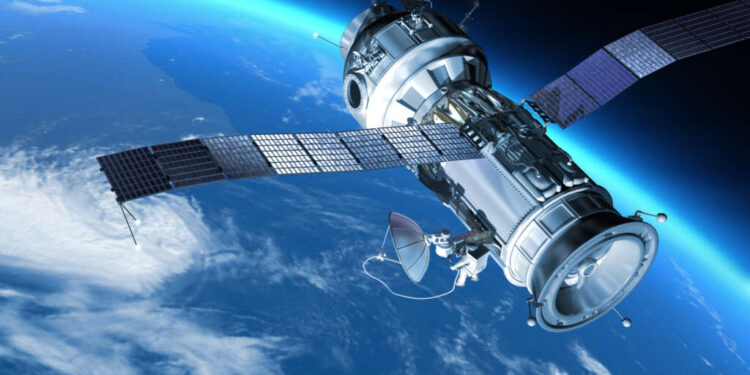The Defense Department plans to spend billions of dollars on satellites that communicate by laser. But officials at the Space Development Agency can’t say for certain whether space laser communication works — at least not all of its contractors have demonstrated this capability. The Federal Drive with Tom Temin got more from Jon Ludwigson, director of the contracting and national security acquisitions team at the Government Accountability Office.
Tom Temin: And this program does seem like they’re full steam ahead. As you report, they’re spending billions in different tranches of money to put these satellites up. What’s going on that they don’t have reliable technology for the whole basis of the program?
Jon Ludwigson: Well, I think this is part of what’s referred to as the proliferated warfighter network that is designed really to provide a low Earth orbit (LEO) — so closest orbits to the Earth—capability to do a variety of missions, including missile warning and missile tracking. To do that mission is pretty technically complex, but it requires the use of lasers for the communication system because it provides a lot more capability in terms of bandwidth, the ability to push more data through the system. So the laser communications are really instrumental to demonstrating this overall capability. And so there’s a lot of value to the LEO orbit approach.
Tom Temin: Right. So they’re looking at basically optical communications because the satellites will be close enough, in satellite terms, that you won’t get this giant propagation width of the optical signal.
Jon Ludwigson: Yeah, so laser communications offer a lot of value in terms of being able to transmit a lot of information. There are going to be hundreds of satellites and, in fact, considerably more over time as the program ramps up — if it does so as planned. But the ability to communicate across those satellites and connect, say, because they’re going to be in orbit as opposed to a geostationary orbit where it’s always looking down at the same location. These are going to be moving, and so in order to identify a missile and track it requires multiple satellites to keep eyes on it, and transmitting that data so the warfighter can have the information available to them is pretty complex.
Tom Temin: And they envisioned communications among the satellites and also between the satellite cluster, if you will, and, of course, the ground. Eventually, it’s got to get down there.
Jon Ludwigson: Correct, yeah. So the satellites would send signals to each other and then they would find an opportunistic downlink — the ability to move the data down to the warfighter. The communication network, I mentioned the missile warning and missile tracking mission, that’s part of it, but this could be a true communications web that would provide the ability to communicate with vehicles, boats, or planes as necessary.
Tom Temin: All right. And what is the status of that capability of laser communications? Your report says that it’s hardly proven at this point, and yet they are planning to launch the first batch.
Jon Ludwigson: Well, they already launched the first batch. So the Tranche Zero, as they refer to it, was 28 satellites, which included both some satellites dedicated to missile warning and missile tracking, as well as the communications satellites that we’re focused on. All have laser communications terminals on them, but the ability to do that is challenging. So in order to make the connection, if you can imagine a flashlight in a room, you have to point, acquire the target, and then track the target so you can transmit the data. And that’s pretty challenging when you’re talking about satellites that are at distances. So it’s not me trying to shine a flashlight across the room — this is perhaps thousands of miles.
Tom Temin: And does it require very precise positioning? Or can the receiving beam have some flexibility in where it points? In other words, could it be concave so that even if it’s a little bit off, it can still kind of catch the beam?
Jon Ludwigson: The beam really needs to be precise. If you can imagine, a laser pointer is probably the easiest thing that individuals can be familiar with. That beam is very small, obviously, when you generate it, but it’s still very small at the terminus when you’re trying to receive it. So you really need to be pretty accurate, you need to find it fairly quickly, be able to acquire that target, and then be able to track it long enough to make the data transmission complete. So it’s a delicate operation. The DoD has limited experience with this, and they’ve only demonstrated it between two of the vendors initially, and one of them had already done it commercially.
Tom Temin: We’re speaking with Jon Ludwigson, director of the contracting and national security acquisitions team at the GAO. So it has been proven. I guess the only way you can really prove it is in space. There’s no way on Earth to really try out this type of technology, it sounds like.
Jon Ludwigson: Well, they’ve done limited bench testing, but the kinds of distances we’re talking about are challenging to try to operationalize in a laboratory or ground-based environment. You really need to get up and fly because the perturbations as you move in space are something you need to cope with. You need to learn how to cope with keeping it stable and keeping it from doing what people refer to as jitter. If you can imagine trying to use a laser pointer while riding in your car, that would be a limited three-dimensional experience—and that would be challenging.
Tom Temin: Sure. We’ve all seen it with laser pointer speakers and watching that little dot jiggle around on the screen. And, well, for Tranche Zero, is it working, not working, or semi-working?
Jon Ludwigson: Well, so they’re pursuing what we refer to as iterative development. In the early stages, they established what they call a minimum viable product. That was to develop the ability to have a mesh network — the ability to demonstrate that you can transmit data and do that in somewhat complex ways to build the strength so that as you expand the system, you’ll be able to do it in a more complex manner and across more numerous satellites.
Tom Temin: And for the plans of Tranche One, Two, Three, and Four of the satellites, I’m interpreting that GAO feels they need to have better proven communication skill before launching these things for billions and billions of dollars.
Jon Ludwigson: Yeah, and I think one thing I want to make perfectly clear is that the idea, the premise that the Space Development Agency (SDA) is using here, is one that we support. We like the idea of iterative development because it does give you the opportunity to start with mature technologies and add more capability as the technologies mature. Every couple of years, the next batch of satellites could become more complex. But to do that, we think it’s really important to demonstrate the minimum viable product before committing to increased layers of complexity and scale, and to incorporate the lessons learned on the earlier tranches into the later tranches.
Tom Temin: Because, yes, the Space Development Agency needs to be in close communication with the combatant commands, I imagine, and the armed services leadership, because those are the consumers of this technology.
Jon Ludwigson: Right. We think it’s really important for any weapon system development to incorporate user feedback. We also think it’s important to share key information like testing timeframes and results across stakeholders. Making sure everyone is learning from each other along the way is the pathway to achieving the most capability at the least cost to the government.
Tom Temin: They need competition, but they also need cooperation so there’s interoperability.
Jon Ludwigson: Absolutely correct.
Tom Temin: And by the way, are Tranche Zero and future ones software-upgradable satellites?
Jon Ludwigson: Yes. The principle is that you should be able to do many improvements through software updates. But some may require physical changes, which is what we’re particularly concerned about. Software updates can be challenging as you increase the number of satellites. There are no Ethernet cords running from the ground to the satellites currently — and I don’t think that would be a desirable characteristic.
Copyright
© 2025 Federal News Network. All rights reserved. This website is not intended for users located within the European Economic Area.







